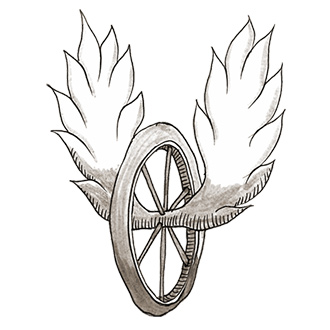
Related Questions
- How can a snail crawl upside-down on the underside of the surface of a pond?
- Are there materials that can absorb heat without becoming hot?
- Why doesn’t a plain, white piece of paper reflect light, but a mirror does?
- Can we safely burn used plastic objects in a domestic fireplace?
- Why is mercury liquid at room temperature?
- What are the basic forces behind tape and glue?
- Is there a way to check a building for structural damage without knocking down walls?
- Why does structural behavior change in different types of soil?
- What makes wood rot so slowly?
- Does a golf ball really change its shape when struck by the club?
How does a match burn in a spacecraft?
In a little ball, and very slowly…
By Sarah JensenWhen women of the Northern Qi Dynasty created the first rudimentary matches of pine sticks and sulfur in order to heat their homes and cook, they weren’t concerned with how their invention would operate outside of their villages. It would be another 1,384 years before the first human traveled in space — plenty of time to consider how flames might behave there.
Igniting a match happens much the same way it did in 577 AD, whether in Northern Qi, Indiana, or inside the International Space Station, says Aaron Johnson, a PhD candidate in aeronautics and astronautics and the Man Vehicle Laboratory. The ingredients necessary for ignition are oxygen, fuel, and heat. “Oxygen is in the atmosphere, and the fuel is the wooden stick and the sulfur and oxidizing agents in the match head,” he says. “The heat is provided by friction created when the match is struck against a surface.”
Once the match is lit, however, combustion in the space station will work a little differently because of the way hot air moves in microgravity. (“Gravity exists inside a spacecraft, but nothing on board — astronauts and candles included — can feel its effect,” explains Johnson.) On earthbound birthday cakes and old-fashioned Christmas trees, hot air is created around a lit candle wick, and because it is less dense than cold air, it rises. Through the process of convection, air currents draw the flame upward, creating its familiar teardrop shape. Simultaneously, cold air is pulled into the void at the wick through diffusion, supplying the flame with the oxygen it needs to burn.
In zero or microgravity, although a flame’s heat is less dense than cold air, it doesn’t rise. Without the air molecules moving about, the flame takes the shape of a sphere — and will burn for quite a long time. “Diffusion is slower than convection in microgravity, so the rate of combustion is slower than on the Earth’s surface,” says Johnson. “In space, less oxygen is required for a flame to sustain, and it will burn longer because oxygen is being consumed more slowly.”
Lighting matches in a spacecraft may not seem like the brightest thing to do in light of the many as-yet-unanswered questions about how materials burn, but that’s exactly why NASA is engaged in flammability experiments. Since 2009, its Flame Extinguishment Experiment (FLEX) on board the International Space Station has explored the behavior of fire in microgravity. “By studying candles and flames in space, we can learn how combustion works in various conditions,” says Johnson. “We know that a traditional fire extinguisher in space introduces air currents that only feed the fire and speed up the combustion process, and these studies will help us design better fire extinguishers for use in spacecraft.”
Environments outside the spacecraft present their own challenges to creating a cozy fire. “On Mars, for example, the atmosphere is mostly carbon dioxide,” says Johnson. “The fuel and oxidizer in a match head would cause the tip to burn, but not for long because of lack of oxygen.” And in the moon’s complete lack of atmosphere, a match cannot ignite at all — explanation enough for why Neil Armstrong didn’t celebrate his step onto the lunar surface with a candlelight dinner.
Thanks to Jesus of Mexico City for this question.
Posted: February 12, 2013